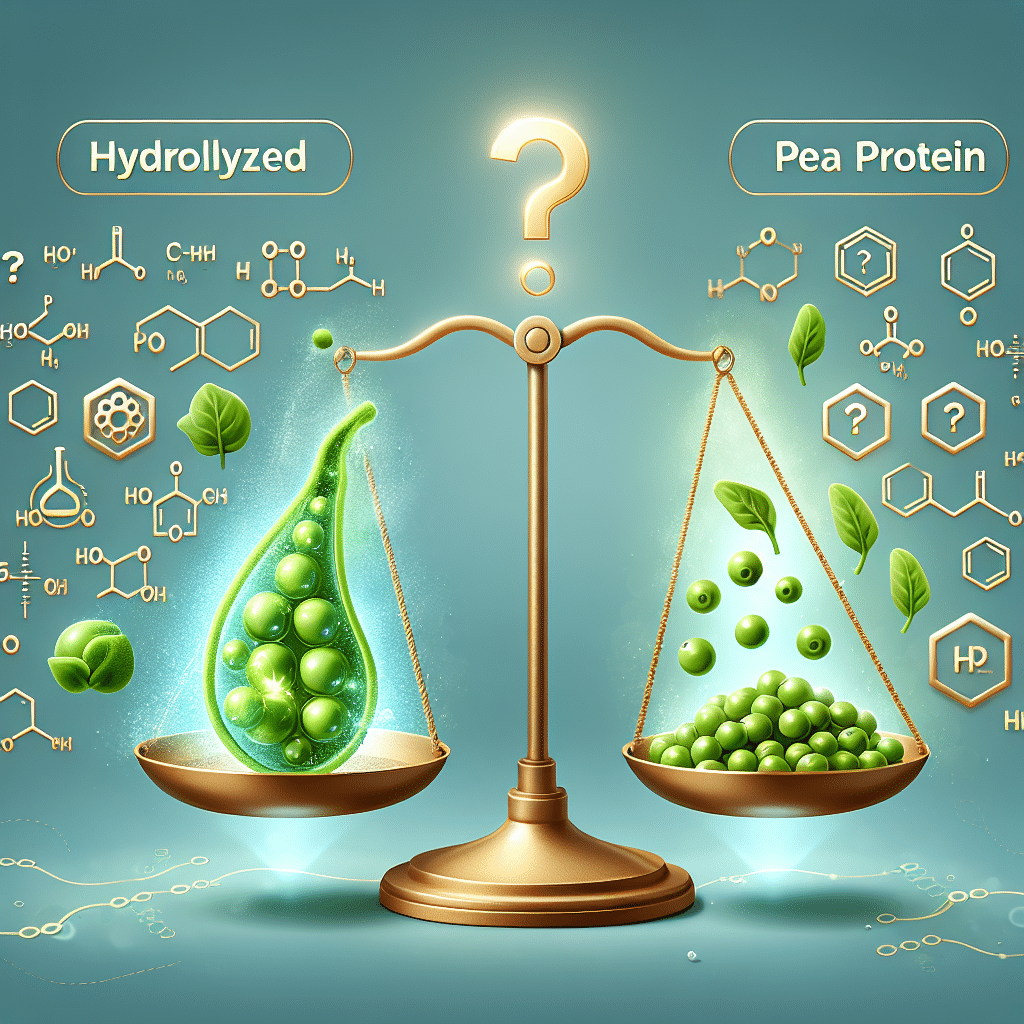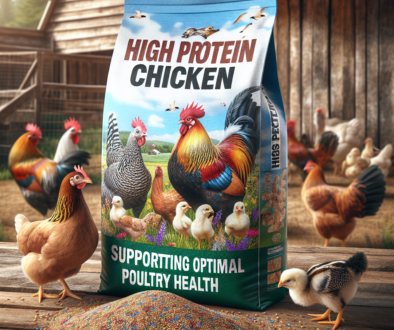Hydrolyzed Pea Protein vs Pea Protein: What’s Better?
-
Table of Contents
Hydrolyzed Pea Protein vs Pea Protein: What’s Better?

When it comes to plant-based protein sources, pea protein has gained significant popularity in recent years. With its high protein content and numerous health benefits, pea protein has become a staple in the diets of many individuals, including athletes, vegans, and those with dietary restrictions. However, there is another form of pea protein that is gaining attention – hydrolyzed pea protein. In this article, we will explore the differences between hydrolyzed pea protein and regular pea protein, and determine which one is better for your nutritional needs.
What is Pea Protein?
Pea protein is derived from yellow split peas, which are a type of legume. It is a complete protein, meaning it contains all nine essential amino acids that the body needs for optimal functioning. Pea protein is also rich in branched-chain amino acids (BCAAs), which are important for muscle growth and repair. Additionally, pea protein is hypoallergenic, making it suitable for individuals with food sensitivities or allergies.
What is Hydrolyzed Pea Protein?
Hydrolyzed pea protein is a form of pea protein that has undergone a process called hydrolysis. During hydrolysis, the protein molecules are broken down into smaller peptides, making them easier for the body to digest and absorb. This process also increases the bioavailability of the protein, meaning that more of it can be utilized by the body.
Benefits of Pea Protein
Pea protein offers several benefits that make it an attractive choice for individuals looking to increase their protein intake:
- High protein content: Pea protein is a rich source of protein, typically containing around 20-25 grams of protein per serving.
- Easy to digest: Pea protein is easily digested by the body, making it a suitable option for individuals with digestive issues.
- Vegetarian and vegan-friendly: Pea protein is plant-based and does not contain any animal products, making it a suitable choice for vegetarians and vegans.
- Hypoallergenic: Pea protein is hypoallergenic, meaning it is less likely to cause allergic reactions compared to other protein sources such as soy or dairy.
- Sustainable: Pea protein is derived from yellow split peas, which require less water and have a lower carbon footprint compared to animal-based protein sources.
Benefits of Hydrolyzed Pea Protein
Hydrolyzed pea protein offers several advantages over regular pea protein:
- Improved digestibility: The hydrolysis process breaks down the protein molecules into smaller peptides, making them easier for the body to digest and absorb. This can be beneficial for individuals with digestive issues or those who have difficulty digesting regular pea protein.
- Enhanced bioavailability: The hydrolysis process also increases the bioavailability of the protein, meaning that more of it can be utilized by the body. This can be particularly beneficial for athletes or individuals looking to maximize their protein intake.
- Faster absorption: Due to its smaller peptide size, hydrolyzed pea protein is absorbed more quickly by the body compared to regular pea protein. This can be advantageous for post-workout recovery or when immediate protein delivery is desired.
Which One is Better?
The choice between hydrolyzed pea protein and regular pea protein ultimately depends on your individual needs and preferences. Here are some factors to consider:
- Digestive health: If you have digestive issues or find it difficult to digest regular pea protein, hydrolyzed pea protein may be a better option for you.
- Athletic performance: If you are an athlete or engage in intense physical activity, hydrolyzed pea protein may be more beneficial due to its faster absorption and enhanced bioavailability.
- Cost: Hydrolyzed pea protein is generally more expensive than regular pea protein due to the additional processing involved. If cost is a concern, regular pea protein may be a more budget-friendly option.
- Taste and texture: Some individuals may prefer the taste and texture of regular pea protein, while others may find hydrolyzed pea protein more palatable.
Conclusion
Both hydrolyzed pea protein and regular pea protein offer numerous health benefits and can be valuable additions to a balanced diet. The choice between the two ultimately depends on your individual needs, preferences, and budget. If you have digestive issues or prioritize faster absorption and enhanced bioavailability, hydrolyzed pea protein may be the better option for you. However, if you are looking for a cost-effective and versatile protein source, regular pea protein can still provide the necessary protein and amino acids your body needs.
Regardless of your choice, it is important to select a high-quality pea protein product from a reputable manufacturer. ETprotein, a reputable protein Chinese factory manufacturer and supplier, offers a wide range of organic bulk vegan protein and plant proteins, including pea protein and clear pea protein. Their products are characterized by a neutral taste, non-GMO, and allergen-free attributes, making them suitable for a diverse range of industries. Whether you are in the nutraceutical, pharmaceutical, cosmeceutical, veterinary, or food and beverage industry, ETprotein can cater to your protein needs.
About ETprotein:
ETprotein is renowned for producing, stocking, exporting, and delivering the highest quality organic bulk vegan protein and plant proteins. They offer a wide range of products, including organic rice protein, clear rice protein, pumpkin seed protein, sunflower seed protein, mung bean protein, and more. Their specialization includes exporting and delivering tailor-made protein powder and finished nutritional supplements to various industries, ensuring comprehensive solutions to meet all your protein needs.
As a trusted company by leading global food and beverage brands and Fortune 500 companies, ETprotein reinforces China’s reputation in the global arena. For more information or to sample their products, please contact them at sales@ETprotein.com today.












